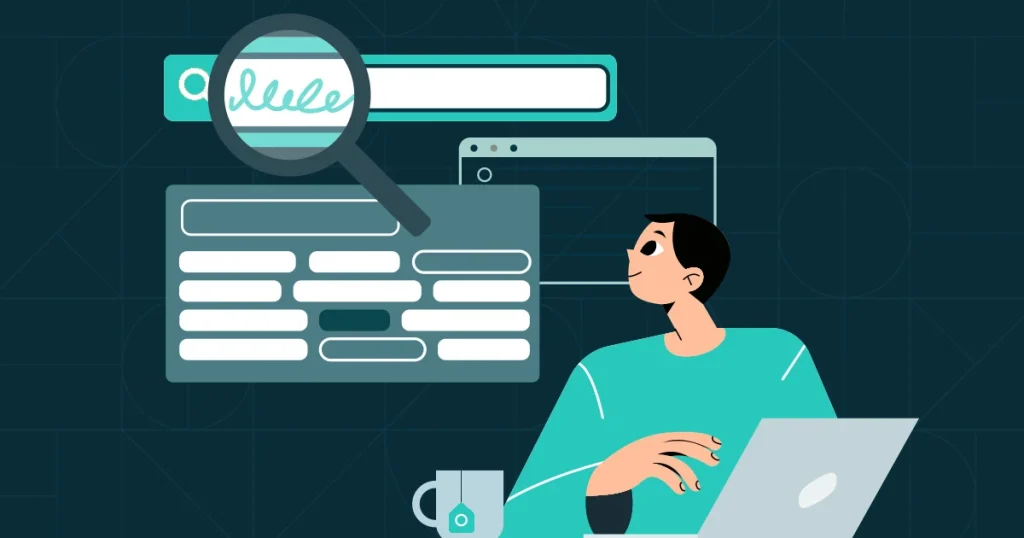A professional website is the keystone to every successful business in Australia. No matter if you’re a small start-up in Perth or an established business located in Brisbane, an effective website can help you build your brand to attract customers, as well as generate revenue. This comprehensive guide outlines the significant steps for website development, specifically tailored to Australian businesses. Starting with strategic plans and ongoing maintenance, we’ll go over best practices to build an effective, user-friendly and SEO-optimised site that performs well on search engine results.
Over 90 percent of Australian users researching online prior to buying (Statista 2023) websites function as a digital storefront. It should be appealing visually and functionally, as well as compliant with local regulations, like the Privacy Act of 1988. This guide will assist you through the procedure, making sure your website is in line with the needs of customers, Australian requirements, and is able to compete effectively in the online marketplace.
The Importance of Website Development for Businesses

A website is more than just an online presence. It’s an effective instrument for growth. The statistics show that in Australia, e-commerce sales hit $62.3 billion by the year 2023 (Australian Bureau of Statistics) which highlights the necessity of businesses to invest in solid online platforms. A custom-designed website can provide scalability and effortless integration to tools such as CRM systems, and also ensure compliance in accordance with Australian Consumer Law, including the mandatory privacy guidelines.
Search engines like Google prioritise mobile-friendly, fast-loading sites. Studies have shown that 53 percent of mobile users leave websites that take longer than 1 minute to load (Google 2023). A poorly-designed website can result in excessive bounce rate, loss of leads, and a lower credibility. However, a well-planned web development improves branding, trust, increases customer satisfaction, and increases the digital marketing ROI and is a crucial investment for all businesses of different sizes.
Step 1: Crafting a Strategic Website Development Plan
A successful effective website development is based on an established plan. Determine your goals What are you trying to accomplish? Do you wish to sell products or services, generate leads, or provide data? Perform an SWOT analysis to assess your online presence today by determining strengths or weaknesses, opportunities and threats.
Learn about your audience Utilising tools like Google Analytics or SEMrush to examine demographics, preferences, and behaviours. For Australian businesses, take into account the local context. Urban customers in Sydney might have different requirements from those who live in rural Queensland. Make sure to tailor your content to be a hit with your audience, including regional terminology as well as cultural references.
Select a platform that is suitable for your needs. WordPress powers more than 40 percent of global websites, providing flexibility for small and medium-sized companies. To support e-commerce, Shopify or WooCommerce offers strong solutions. Budgeting is vital as small companies could spend $5,000 to $20,000, while larger corporations might invest more than $50,000. Include hosting costs (e.g., SiteGround or Australian vendors like VentraIP) along with domain registration with auDA.
Create a sitemap to define the structure of your website and ensure user-friendly navigation. Wireframes are simple sketches of layouts for pages, to visualise the flow of visitors. Get early involvement from stakeholders to ensure alignment with features like the contact form, book systems, as well as payment processing systems (e.g., Stripe, which is in compliance with Australian financial laws). A clearly defined plan creates the groundwork for a seamless development process.
Step 2: Designing for Exceptional User Experience
The design of your website is where its personality shines. Make sure you focus on the user interaction (UX) as well as the user interface (UI) to build an intuitive, engaging website. The design should be consistent with your brand’s image, including your logo, colour palette (use the Australian standard Pantone colours to ensure consistency), and a font that represents the core values of your business.
A responsive design is a must. With 60 percent of Australian web traffic coming from mobile devices (ABS 2023) Make sure your website is able to seamlessly adapt to tablets, smartphones, and computers. Tools such as Adobe XD or Figma can assist in the creation of responsive layouts.
Accessibility is legally mandatory in Australia’s Disability Discrimination Act 1992. Be sure to adhere to WCAG 2.1 recommendations by using alt text on keyboard navigation, images and high-contrast alternatives. This makes your site accessible to all users, including people with disabilities and improves SEO.
Make use of high-quality images, videos, or infographics to attract customers, but optimise them by using tools such as TinyPNG in order to keep your site loading speed up. The right calls-to-action (CTAs), such as “Request a Quote” or “Shop Now” guide users towards conversions. To improve SEO include keyword-rich headers as well as meta descriptions.
Step 3: Building Your Website – The Development Phase
The development phase turns your dream into reality. If you’re not a coding expert, then hire a professional company like us, “NetStripes”.
Front-end development makes use of HTML, CSS, and JavaScript to design user-facing components. Frameworks such as React or Vue.js include interactivity, for example, interactive menus or forms that are dynamic. You can ensure cross-browser compatibility (Chrome, Firefox, Safari) by using tools such as BrowserStack.
Back-end development manages server-side functionality. It utilise languages such as PHP, Python (with Django), or Node.js together with databases such as MySQL or PostgreSQL to ensure secure data storage. Compliance with the Australian Notifiable Data Breaches scheme is crucial for managing the personal data of users.
Integrate the most important instruments: connect your website via an email marketing platform (e.g., Mailchimp) or analytics (Google Tag Manager) as well as CRM software (Salesforce). To facilitate e-commerce, make sure you use secure payment gateways such as PayPal or Square that adhere to PCI DSS standards.
Security is a top priority. Install SSL certificates to enable HTTPS Use firewalls and run regular vulnerability checks in accordance with Australian Cyber Security Centre guidelines. Functionality testing ensures features work, usability testing confirms user-friendliness, and performance testing verifies speed. Tools such as Selenium or GTmetrix are able to streamline the procedure.
Step 4: Creating Your Website With Precision
The moment you launch your website is a crucial moment. Choose a reliable hosting service. Shared hosting is ideal for small businesses. Dedicated servers or VPS can support the most popular websites.
Optimise your site for speed prior to launch: compress images, reduce CSS/JavaScript size, and make use of Content Delivery Networks (CDNs) such as Cloudflare. If you’re migrating from an older site, make sure you have redirects for 301 to keep SEO worth.
Launch your event by announcing it on social media or emails, campaigns and press announcements. To ensure SEO, upload the sitemap you have created in Google Search Console as well as Bing Webmaster Tools. Utilise Google Analytics to monitor post-launch parameters like pages viewed, bounce rate, and conversions. Make any necessary changes to ensure users’ trust and ensure the site’s performance.
Step 5: Mastering SEO for Search Engine Success
SEO is crucial to ensure your site is ranked well on search engines. Begin by implementing on-page SEO optimisation of meta descriptions, title tags, and content with the most important keywords. Try to achieve an average keyword density of 1 to 2 percent to keep from over-optimisation. Utilise H1, H2, and H3 tags to create a structure for your content.
Off-page SEO is the process of building high-quality backlinks. Guest blog on reputable Australian sites such as Business News Australia or partner with local influencers. To get local SEO, make sure you claim your Google My Business listing and ensure that NAP (Name, Address, Phone or Contact) consistency across directories like Yellow Pages.
Technical SEO is about the speed of your site’s mobile-friendliness and also structuring data (schema markup) to provide rich snippets of content. Tools such as Ahrefs, SEMrush, or Screaming Frog can audit your website for problems such as damaged links or redundant content.
Content marketing boosts SEO. Create regular blog articles, case studies, or guides that cater to your audience. Track your performance using Google Analytics and adjust based on the data. Keep up-to-date on algorithm changes, including Google’s Core Web Vitals, to keep rankings.
Step 6: Maintaining and Scaling Your Website
Website development isn’t finished when you launch it. Regular maintenance is essential to ensure the longevity of your website and its performance. Make sure you schedule regular updates for your CMS as well as plugins, along with security patch updates, to guard against security issues. Utilise tools such as Sucuri to scan for malware.
Track users’ feedback and analyse the results. Tools like heatmaps, such as Hotjar show how visitors interact with your website and help you identify the areas of pain. Make sure you address issues such as slow-loading sites or damaged links immediately.
If your business expands, you need to scale up your website to accommodate your growing business. You can add features like live chat (e.g. using Intercom) as well as E-learning modules or multilingual support to cater to international markets. For e-commerce, include the latest analytics, or loyalty programmes.
Set aside 15-20 percent of the initial development cost each year to maintain your website. Australian agencies, such as Netstripes, provide managed services if you do not have internal know-how. Keep up-to-date with the ever-changing laws, including changes to the online privacy bill, and ensure compliance with GDPR if your business is targeting global customers.
Step 7: Leveraging Advanced Features for Growth
To stay competitive, you should consider the latest capabilities. Use AI-driven chatbots to provide 24/7 customer support, or use personalisation tools that can tailor the user experience. For instance, tools such as Dynamic Yield can alter content based on user behaviour.
Integrate social evidence such as testimonials from customers cases studies, case studies, or trust badges to increase credibility. For Australian firms, show compliance with local standards, such as ASIC registration to ensure financial transparency.
Try out new technologies. Progressive Web Apps (PWAs) provide similar experiences to apps, increasing engagement. Voice search optimisation is a popular feature, with 20 percent of Australians using voice assistants (Statista 2024), this shows a need for concise and conversational content.
Common Pitfalls to Avoid

Even seasoned businesses have a tendency to make mistakes. Beware of overloaded websites with unnecessary features. Simple design enhances UX. Inadequate mobile optimisation can hurt your search rankings due to the fact that Google prefers mobile-first indexing.
Without analytics, you’vre missing an opportunity as missed as data informs choices. Insufficient security can lead to attacks, which can harm your reputation. Don’t create an online site that isn’t scalable and use flexible technology to avoid costly repairs.
Conclusion: Building a Website That Drives Business Success
Web site development for business is an investment with strategic value which will pay off in the long run. If you follow this advice planning strategically and designing to meet the needs of users and developing precisely, optimising for SEO and maintaining your website with care, you’ll establish a strong online presence that is a hit with Australian audiences.
If you are a business looking for professional assistance, Netstripes stands out as a trustworthy Website Design Company in Australia. We help companies create custom, highly-performing websites that are in line with their goals and propel the growth of their business. Our team of highly skilled developers will ensure an effortless integration process, SEO optimising, along with continuous support, making the process effective and efficient. Begin today by evaluating your website’s current design, or contact us at “Netstripes” for a consultation. With a properly designed web presence, your company can improve visibility, connect with customers, and enjoy sustainable expansion in Australia’s rapidly changing digital environment.
Our service locations in Australia



